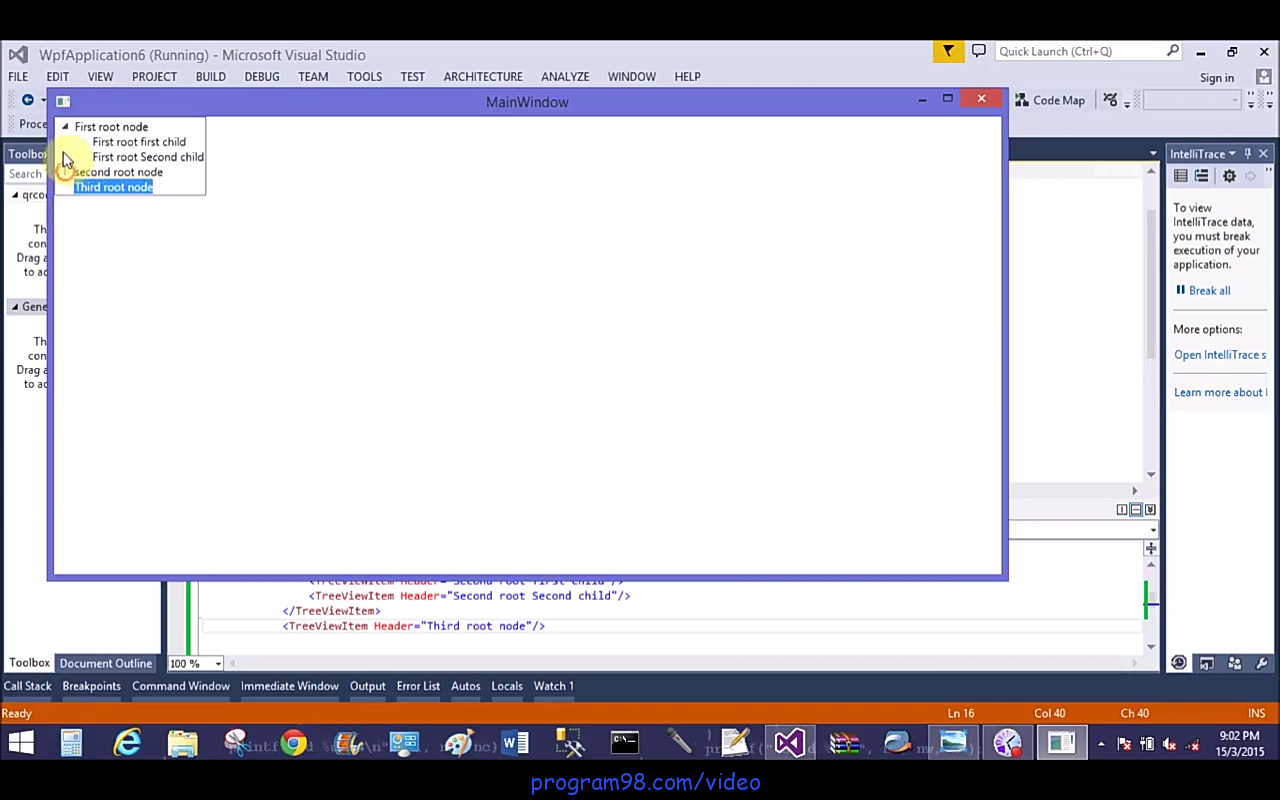

Listing 1: A collection class is a great place to initialize default data for that collection.
TREEVIEW WPF FREE
Feel free to load this collection with the data of your choice. For purposes of this article, I'm using hard-coded data. In the constructor of the EmployeeTypes collection class, you build the collection of EmployeeType objects and fill each one with Employee objects, as shown in Listing 1. This is a collection of EmployeeType objects. The last class you create is a collection class called EmployeeTypes created using the generic List class. First is a string property, called Description, which holds the name of the EmployeeType, such as “Supervisor” or “Project Manager.” The second property, Employees, is a generic collection property to hold a list of Employee objects that are associated with this particular EmployeeType. The EmployeeType class contains two properties. A constructor is created to accept a name argument that you can use to set the Name property when you create an Employee object. This class has a single property called Name. The first class you build is the Employee class. Just as a TreeView is a hierarchical structure, create a set of classes that is also a hierarchy.įigure 2 shows the three classes that will be necessary for expressing a hierarchy of EmployeeType objects of which each EmployeeType object can hold one or more Employee objects.įigure 2: Three classes are needed to express a three-level TreeView. What's important is how you structure the classes into which your data will be placed. How and from where you retrieve the data is not important for this article. You want to retrieve data from a database table or an XML file and build the TreeView dynamically. You don't want to use hard-coded XAML in your WPF application. įigure 1 shows you how this TreeView looks when you run the WPF application.įigure 1: A hard-coded two-level TreeView Create Hierarchical Classes to Mimic Your TreeView
TREEVIEW WPF CODE
To start, let's look at the typical two-level WPF TreeView that has been hard-coded with the values shown in the following code snippet. In this article, I'm going to break down how these templates work, so you can really understand what's going on underneath the hood. What if you have more than two levels? This is where it's vital to understand exactly how the HierarchicalDataTemplates work.
TREEVIEW WPF HOW TO
If (row.There are many examples of using the Windows Presentation Foundataion (WPF) TreeView that you can find on the Web, however, most of them only show you how to go to two levels. will add new count to the variable after expand the items if we found the item will stoping the timer Grid node = FindVisualChildren(tree).ToList() Tmr.Interval = new TimeSpan(0, 0, 0, 0, 1) Ĭount = FindVisualChildren(tree).ToList().Count Public void FindNode(TreeView tree = null) will call to this method and adding treeview control to search about item tmr = new () // by this timer will search about an item becouse for going to next item we need to stop sometime

Public string FilterColumnText // by this variable will display text I am using C# WPF with Visual Studio 2015 and Windows 10. I want to search for an item by value and set IsExpanded to True, then select it. I am having a problem getting the TreeViewItem from a TreeView with HierarchicalDataTemplate.


 0 kommentar(er)
0 kommentar(er)
